7 Surprising Reasons Corgis Do Well on Planes
Traveling with pets can be a stressful experience, as it often raises concerns about their safety and well-being during the journey. An increasing number of pet owners are curious about whether it’s possible to bring their Corgis on planes. After all, Corgis are not tiny lap dogs, but they’re not as large as breeds like German Shepherds or Labradors.
Understanding the rules and regulations regarding Corgis on planes can help alleviate some of the worries pet owners may have.
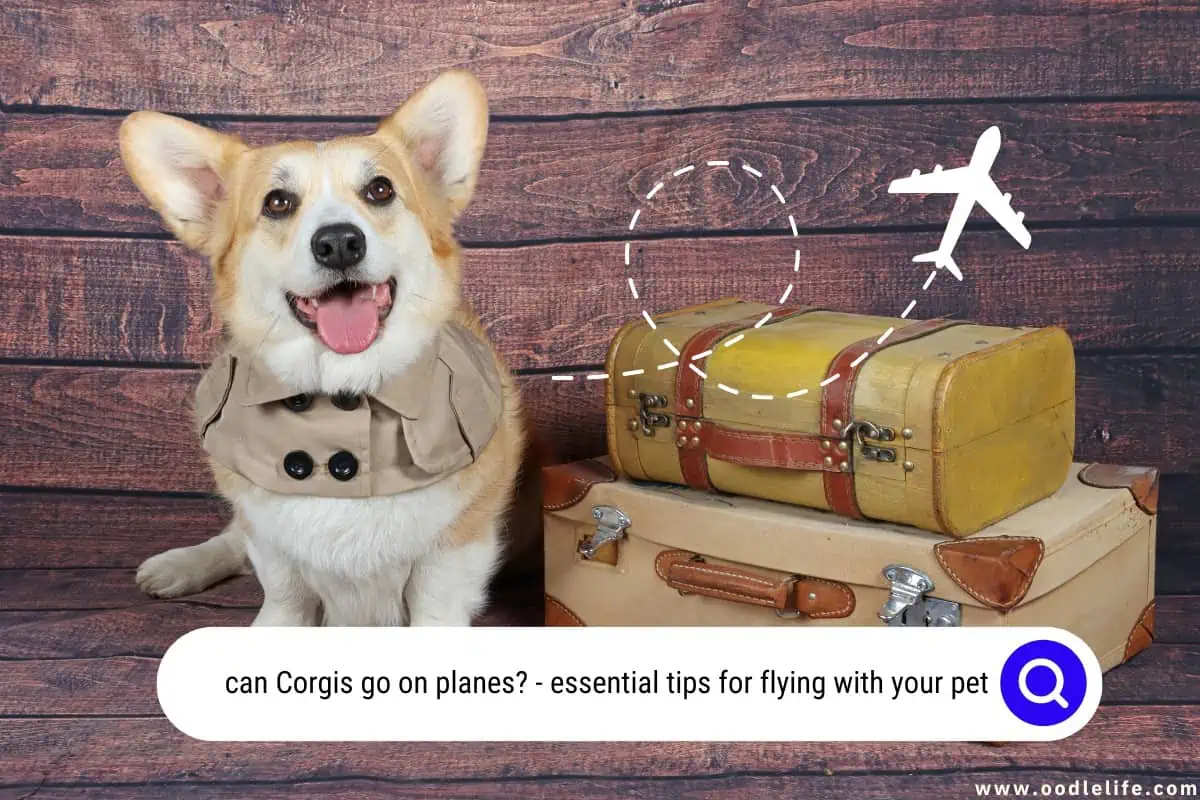
Airlines have specific pet policies, which typically dictate which types of pets can be transported and under what conditions. These policies differ from one airline to the next, and it is essential to understand any limitations before planning your trip. For Corgis, most airlines permit their transportation, considering their breed and size, though there might be some restrictions based on the aircraft, duration of the flight, and the dogs’ health conditions.
One thing to remember is that your cuddly Corgi may have to travel in the cargo area, depending on their size and the rules of the airline you choose. While this may not always be the preferred choice for owners, many airlines have made significant efforts to ensure pets’ safety during this type of travel, providing climate-controlled and pressurized spaces for animals. It’s always a good idea to research your chosen airline’s pet policies and consult with your veterinarian to ensure your Corgi has a safe and stress-free journey.
Can Corgis Go on Planes?
Corgis, those adorable little dogs known for their short legs and big personalities, have become increasingly popular as family pets. Naturally, many Corgi owners want to know if they can bring their furry friends along when they travel by air. The answer is yes, Corgis can usually go on planes, but there are certain restrictions and requirements that vary depending on the airline.
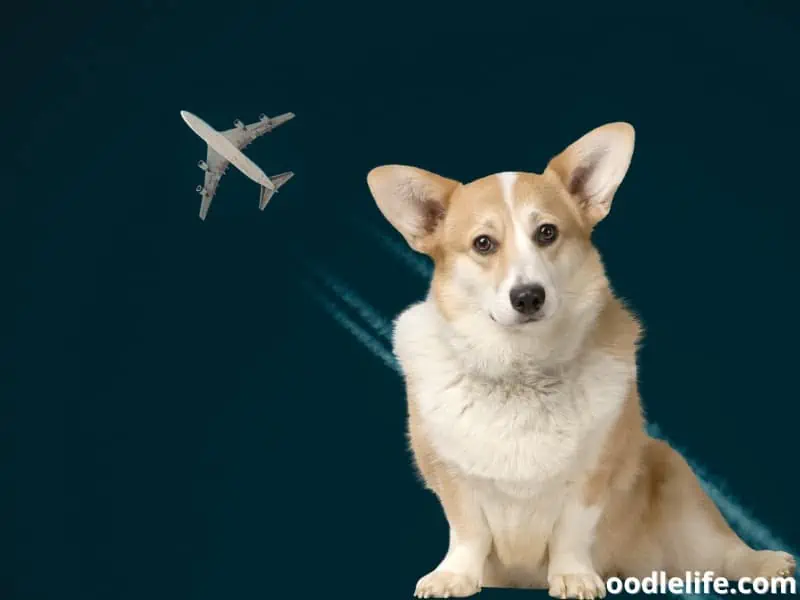
Airlines typically have rules in place for traveling with pets, including the type and size of the carrier, as well as the location where the pet will be kept during the flight. Most airlines allow small dogs, like Corgis, to be kept in the cabin in an approved carrier that fits under the seat in front of you. However, some airlines may require your Corgi to travel in the cargo hold, so it’s essential to check the specific pet policy for the airline you’ll be flying with.
It’s also important to note that not all planes can accommodate pets in the cabin or cargo hold. You’ll want to check with the airline ahead of time to ensure you’re booking a flight on a pet-friendly aircraft. Additionally, some airlines may limit the number of pets allowed on a single flight, so be sure to reserve your Corgi’s spot when you book your own ticket.
Before taking your Corgi on a plane, you’ll need to visit the vet for a health check and ensure your dog’s vaccinations are up to date. Some airlines may require a health certificate or other documentation proving your Corgi is fit to fly, so be prepared to provide these papers.
Lastly, don’t forget to acclimate your Corgi to its carrier before your flight. Pets can get anxious in unfamiliar environments, so getting your Corgi used to its carrier will help alleviate stress during the trip. It’s also a good idea to bring along a favorite toy or blanket to provide some comfort and familiarity.
Overall, yes – Corgis can go on planes. Just be sure to do your research and prepare your pup for a smooth flying experience. Safe travels, and enjoy your trip with your furry companion!
Airlines and Their Policies
When it comes to traveling with your furry friend, airline policies vary, so it’s essential to know the specific guidelines for the airline you’ll be flying with. Let’s explore some popular airlines and their policies regarding Corgis on planes.
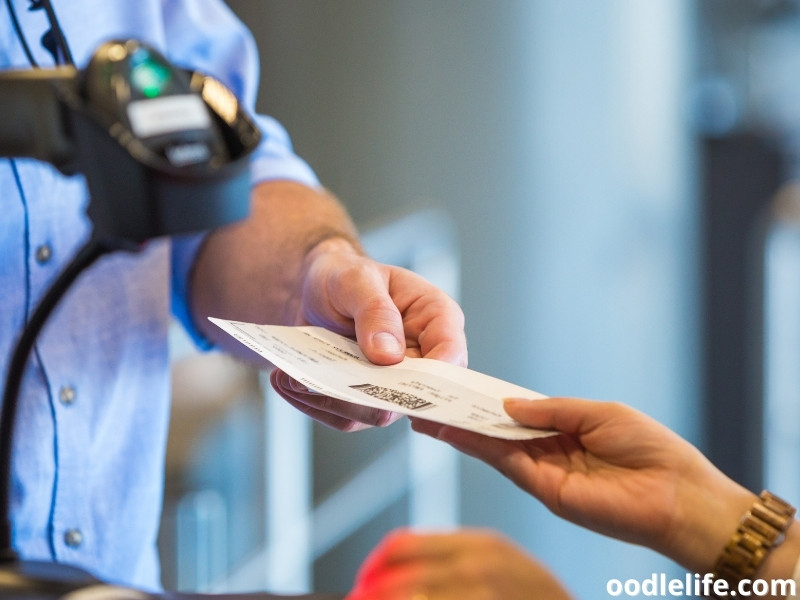
- Delta permits small dogs, cats, and even household birds to travel in the cabin with their owners, as long as the pet fits comfortably in a carrier under the seat. Delta’s pet fee for domestic flights is currently $125.
- American Airlines also allows small pets to travel in the cabin as long as the carrier fits under the seat. Their pet fee is similar to Delta’s, at $125 per pet carrier.
- Southwest is another airline accommodating to pet owners, allowing small dogs and cats in the cabin. Keep in mind, Southwest’s pet fee is $95 per pet carrier.
- JetBlue takes it up a notch with their JetPaws program, which grants pet owners an additional 300 TrueBlue points per flight segment with their pet. JetBlue’s pet fee is also competitive, priced at $125 per pet carrier.
- For our Canadian friends, Air Canada accommodates small dogs and cats in the cabin, with a pet fee of CAD 50-59 within Canada and USD 100-118 to the United States.
- If you’re flying to Europe, Swiss International Airlines allows small animals, such as cats, dogs, or rabbits, to join you in the cabin under specific conditions. Their pet fee ranges from CHF 60-180, depending on the flight destination.
- Lastly, SAS (Scandinavian Airlines) is pet-friendly and allows small dogs and cats to travel in the cabin. SAS has a pet fee in the range of €30-90, depending on the flight destination.
Remember, each airline has specific requirements for pet carriers, vaccination paperwork, and sometimes, breed restrictions. It’s a good idea to visit the airline’s website or call customer service to make sure your lovable Corgi can join you on your flight.
Bon voyage, or as your Corgi might say: “Woof woof, let’s fly!”
In-Cabin Travel
Travelling with your furry friend, especially a Corgi, can be an exciting experience. In-cabin travel is possible for these adorable companions, but there are a few important factors to consider.

First and foremost, it’s essential to ensure your Corgi fits within the airline’s size and weight requirements for in-cabin pets. Most airlines allow small or medium-sized dogs, and Corgis typically fall into this category. However, it’s always best to double-check with your specific airline.
When traveling with your Corgi in-cabin, a suitable pet carrier is a must. Not only does it provide comfort and security for your pet, but it also ensures the safety of other passengers. Be sure to choose a properly ventilated carrier with enough room for your Corgi to move around comfortably, but not too large that it blocks the airline seat or aisle.
Now that you have the right carrier, it’s crucial to prepare your Corgi for the journey. Acclimate your pet to the carrier well in advance of your trip, making it a familiar and comfortable space. You can also practice short car rides, gradually increasing the duration, to help your furball adjust to being in a confined space for an extended period.
During the flight, place the pet carrier under the seat in front of you. This allows your Corgi to remain close and ensures they won’t be accidentally bumped by passing passengers or flight attendants. Make sure to provide some familiar toys or a comforting blanket to help soothe any anxiety your Corgi might experience.
Remember that every airline may have different policies regarding in-cabin pet travel. Research and comply with your airline’s specific rules, such as fees, documentation, and available flights.
In conclusion, traveling with your Corgi in-cabin can be a smooth and enjoyable experience for both you and your pet. With proper preparation and adherence to airline guidelines, you and your Corgi will be soaring through the skies together in no time. And who knows?
Your Corgi might even become the star passenger, making your flight a memorable one for everyone on board.
Cargo and Baggage Considerations
When planning to travel with your Corgi on a plane, it’s essential to consider both cargo and baggage options. The airline’s rules and regulations will dictate whether your Corgi can travel with you in the cabin or if they must be stowed away in the cargo hold.

If your Corgi is small enough and meets the airline’s requirements, they may be allowed as a carry-on pet. In this case, a travel crate or kennel that fits under the seat in front of you will be needed. Ensure the crate has proper ventilation, and your Corgi can comfortably move inside it.
However, if your Corgi is too large to fit in a carry-on kennel, they will have to travel as cargo. The cargo hold of an airplane is pressurized and temperature-controlled, ensuring a relatively comfortable environment for pets. Regardless, it is essential to choose a sturdy, airline-approved crate for your Corgi’s journey.
These crates should have sufficient room for your dog to move around, and they should be securely fastened to prevent any chance of escape. Don’t forget to label the crate with your Corgi’s name, your contact information, and any necessary feeding or medication instructions.
When selecting a travel crate for your Corgi, consider factors like weight, dimensions, and the crate’s material. Airlines have specific requirements for pet crates, so be sure to check with your chosen airline before purchasing.
Additionally, take note of any restrictions on the total weight of your Corgi plus their crate. This may affect the cost of their travel, especially if they are classified as oversized or overweight baggage.
On top of crate considerations, it’s also a good idea to plan ahead and pack your Corgi’s essential items, such as their leash, toys, and food. However, make sure to check if there are any restrictions on the type and amount of food that can be carried onboard.
In conclusion, a well-planned trip with your Corgi starts with understanding the cargo and baggage options. Do the necessary research, make appropriate arrangements, and soon enough, both you and your furry friend will be embarking on an exciting journey together. Bon voyage!
Choosing the Right Carrier
When picking a carrier for your beloved Corgi on a plane journey, it’s essential to choose a carrier that meets airline requirements and ensures comfort for your furry companion. The key is finding a pet carrier that suits your Corgi while complying with airline regulations.
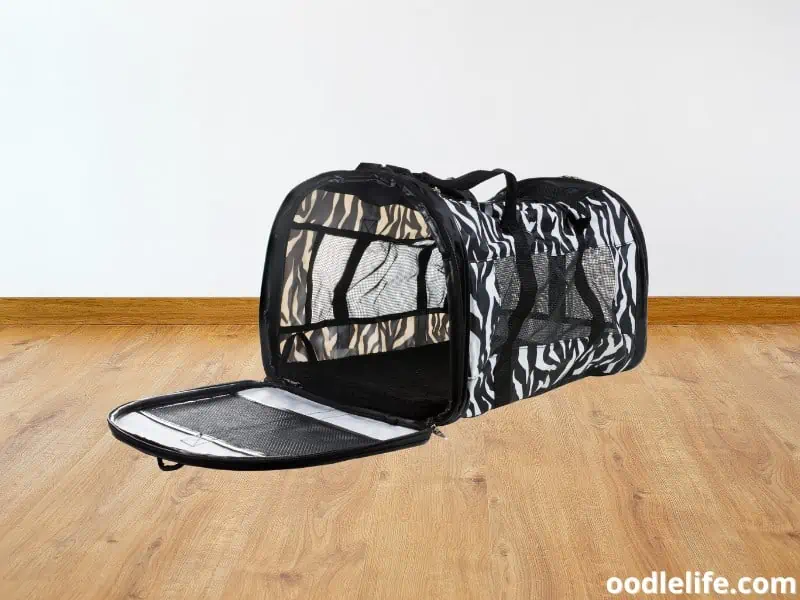
A popular choice among pet owners is a soft-sided carrier, which provides adequate ventilation and a cozy interior for your Corgi. Soft-sided carriers, like the well-known Sherpa bag, are typically lightweight and easier to store under airplane seats without fuss.
Remember that each airline has its guidelines and size requirements for pet carriers, so make sure to check specific airline policies before flying. Ideally, your dog carrier should have adequate space for your Corgi to stand, turn around, and lie down without feeling cramped.
Here are some important features to consider when choosing a carrier for your travel-savvy Corgi:
- Ventilation: Ample mesh panels to allow fresh air circulation.
- Comfort: Soft, cushioned bottom for your Corgi’s optimum comfort during the flight.
- Safety: A secure closing mechanism to prevent accidental escapes.
- Easy Accessibility: A top and side entry for easy pet access during the trip.
- Durability: A sturdy design and robust materials to withstand frequent travels.
Air travel can be an overwhelming experience for both pets and owners alike. Picking the right dog carrier makes a significant difference in ensuring a joyful and comfortable journey for your Corgi. So, next time you fly with your fluffy companion, make a wise and well-informed decision when choosing the perfect pet carrier.
Health and Safety Requirements
When planning to travel with a Corgi on an airplane, it is essential to consider health and safety requirements to ensure a smooth journey. The first step is to consult with a veterinarian to confirm that your Corgi is fit to fly. This may include obtaining necessary vaccinations and ensuring that your pet is free from any illnesses or medical conditions that may pose risks during the trip.

A health certificate issued by a certified vet is also typically required when traveling with a pet. This document should indicate that your Corgi has been examined and is in good health, free from contagious diseases, and up-to-date with all required vaccinations. One essential vaccination to keep in mind is the rabies vaccine.
Obtaining a rabies cert is crucial as most airlines and countries require proof that your pet is vaccinated against this deadly disease before allowing entry.
To keep your furry companion comfortable during the flight, make sure their travel carrier is approved by the airline and allow them to get familiar with it before the journey. Trim their nails to prevent any potential injuries, and ensure their tail is safely tucked in when closing the carrier door.
In summary, properly preparing your Corgi for air travel involves consulting with a vet, obtaining necessary health certificates and vaccination records, and providing a safe, comfortable environment in their carrier. Following these guidelines will help ensure a pleasant and stress-free journey for both you and your four-legged friend.
Preparing Your Corgi for Air Travel
Taking your Corgi on a plane might seem like a daunting task, but with proper preparation, it can be a smooth and stress-free experience for both you and your furry friend. Here are some helpful tips to get your Corgi ready for their high-flying adventure.

Before the big trip, it’s essential to familiarize your Corgi with their travel carrier. Make it a comfortable and positive space by adding familiar items like a blanket or a toy. This will help them associate the carrier with positive feelings and make them more at ease during the flight.
When it’s time to head to the airport, ensure your Corgi is wearing a secure and properly fitted leash. You never know when an overexcited pup might try to chase an airport cart, so it’s best to be prepared.
A well-fed and hydrated Corgi is a happy Corgi. However, be cautious not to overdo it before the flight. Provide a small meal and some water a few hours before takeoff. This will also help minimize the risk of an upset stomach during air travel.
One of the biggest challenges when flying with pets is managing bathroom breaks. Plan ahead by familiarizing yourself with the airport’s pet relief areas and scheduling potty breaks according to your Corgi’s needs. A walk around the terminal before the flight can also help to tire them out, which might lead to a more peaceful journey.
Finally, try to opt for a direct flight whenever possible. This will reduce the overall time spent in transit and minimize the stress and discomfort your Corgi may experience.
In conclusion, by following these simple steps, you can make air travel with your Corgi a fun, safe, and enjoyable experience for everyone involved. Your four-legged friend will undoubtedly appreciate your attentive preparations and may even become a seasoned traveler in no time!
Traveling with Emotional Support Animals
Emotional Support Animals (ESAs) play a significant role in the lives of individuals who require their companionship for emotional and mental well-being. ESAs can include various species, such as dogs, cats, and even some birds. However, when it comes to traveling with your ESA, especially by plane, there are specific considerations to keep in mind.
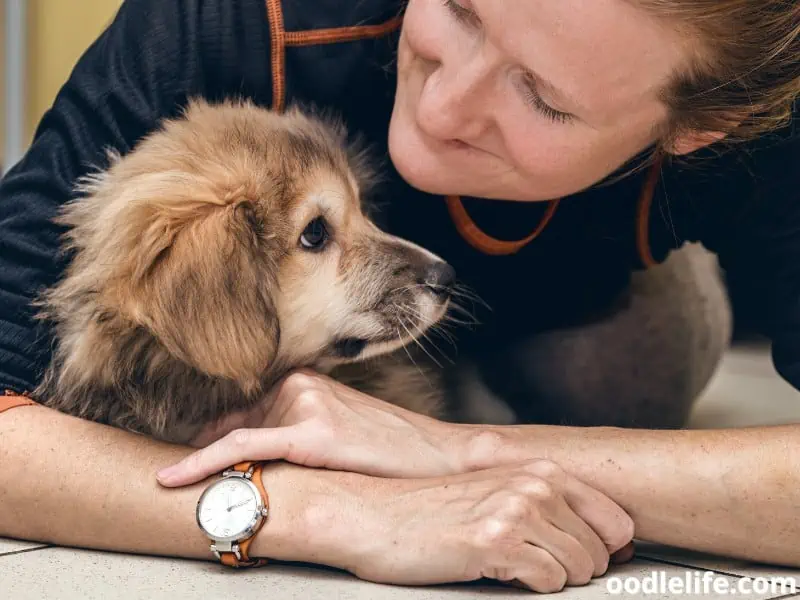
For instance, the Air Carrier Access Act permits emotional support animals to travel with their eligible handlers inside airplane cabins, but certain guidelines must be followed. First off, documentation confirming the traveler’s need for an ESA is typically required by the airline. This may include a letter from a licensed mental health professional stating the necessity of the emotional support animal.
Airline policies regarding ESAs may vary slightly, so it’s essential to check with your chosen airline well in advance. Besides documentation, some airlines may have specific requirements for animal behavior, size, and breed. This is where Corgis come into the picture.
Corgis, being a small to medium-sized breed, can be ideal candidates for emotional support animals. Their amiable nature, trainability, and compact size make them suitable companions for people with different emotional and mental health needs. Moreover, they can easily fit in the cabin of an airplane, making them an excellent choice for air travel.
However, it’s crucial to train your Corgi to behave appropriately in public environments like an airport or an airplane. Ensuring that your furry friend is well-behaved and comfortable with the hustle and bustle of a busy airport can help minimize any stress for both you and your ESA during the journey.
In conclusion, Corgis can indeed go on planes as emotional support animals provided they meet the airline’s specific requirements and guidelines. So, when planning your next adventure, don’t forget to consider the needs of your adorable and supportive Corgi companion.
Restrictions and Requirements for Brachycephalic Breeds
Brachycephalic breeds are known for their short muzzles and distinct facial features. Unfortunately, these characteristics can cause breathing difficulties, which can be aggravated when traveling on planes. Airlines have implemented specific restrictions and requirements for such breeds to ensure their safety.

Airlines often have strict guidelines for traveling with brachycephalic breeds, including the Boston Terrier, Boxer, Cane Corso, Chow Chow, English Toy Spaniel, Pit Bull, Pug, and Shar Pei. These measures are taken to mitigate the risk of respiratory distress during the flight.
Before planning to travel with your brachycephalic dog, it’s essential to consult with your veterinarian. They can evaluate your pet’s health and determine if it’s safe for them to fly. Additionally, always check with your chosen airline for their specific policies related to brachycephalic breeds.
Some airlines may not allow these breeds to travel in the cargo hold due to the increased risk of respiratory issues.
When preparing for your flight, make sure your dog is in a well-ventilated, appropriately sized crate. This will help decrease any stress and provide them with enough space to breathe comfortably during the flight. Include a label on the crate indicating that your dog is a brachycephalic breed, so airline staff are aware and can take the necessary precautions.
In some cases, an airline may require a health certificate or additional documentation for your brachycephalic breed. Always verify these requirements well in advance of your travel date to avoid any unexpected surprises at the airport.
While flying with a brachycephalic dog might seem daunting, taking the necessary steps and precautions based on airline guidelines, vet recommendations, and proper crate selection can make the journey smoother and safer for your furry friend.
Remember, each airline’s policies may vary, and it’s essential to stay informed about any updates or changes to ensure a stress-free flying experience for both you and your brachycephalic companion. Safe travels!
Traveling to Specific Destinations
When planning a trip with your Corgi, it’s important to understand the rules and regulations pertaining to their travel on planes. In the U.S., Canada, Alaska, and Puerto Rico, most airlines allow pets like Corgis, but each has its own specific policies and requirements.

When booking a plane ticket, it’s crucial to contact the airline in advance to inquire about their pet policy. For example, some airlines require specific pet carriers, health certificates, or have restrictions on the number of pets allowed on a flight. Be prepared to provide all necessary documents and comply with their requirements to make your trip as smooth as possible.
Once your destination is decided, it’s essential to consider the climate and environment. The temperatures in Alaska can be quite cold, while Puerto Rico has a tropical climate. Be sure to pack appropriate items for your Corgi, like a warm coat for colder climates or sunscreen for sun protection.
Also, keep in mind potential hazards specific to each location, such as ice and slippery surfaces in Alaska or unfamiliar plants in Puerto Rico.
Before embarking on your journey, ensure that your Corgi is comfortable and accustomed to the surroundings on a plane. Practice placing your Corgi in their carrier and simulate the airplane environment. This will help prevent anxiety and allow them to remain calm during the flight.
Lastly, don’t forget to account for travel costs. Airline tickets, pet fees, and potential accommodations for your Corgi can add up. Make sure to budget accordingly to avoid any financial surprises.
To sum up, taking your Corgi on a plane is possible with some planning and consideration. Keep in mind the destination, pet policies, and your Corgi’s comfort during the trip. By adhering to these guidelines, you and your Corgi should be well-prepared for a safe and enjoyable journey!
Reservation and General Tips
When planning to travel with your Corgi, making a reservation for them on the plane is essential. Start by contacting the airline you’re planning to fly with, as different airlines have distinct pet policies. It’s a good idea to reconfirm your booking just before leaving home to ensure a place for your furry friend.
As for the weight limit, airlines typically have one that encompasses both the pet and the carrier. Generally, the total weight (pet + carrier) should not exceed 15-20 lbs. Bear in mind that Corgis can weigh up to 30 lbs or more, so be sure to choose a suitable airline that can accommodate their weight.
When it comes to handling your Corgi during the trip, invest in a sturdy and comfortable pet carrier. Through this, you’ll be able to easily handle your Corgi while keeping them cozy and secure. Ensure the carrier fits under the seat in front of you, as it may need to remain there throughout the flight.
In-flight potty breaks can be a challenge, especially for a Corgi that’s new to air travel. To manage this, consider taking them for a walk before boarding to minimize the need for a bathroom break during the flight. It’s also good practice to line their carrier with absorbent pads or familiar blankets in case of any “accidents.”
Remember to stay calm and collected during the journey, as your Corgi will look to you for reassurance. With a little planning and preparation, both you and your fluffy companion can have a smooth and enjoyable flight experience.